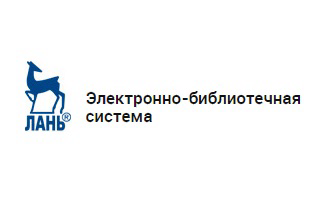УДК 622.833.5
DOI: 10.21440/0536-1028-2019-5-14-20
Smirnov O. Iu. Investigating the conditions of applying the filling method of field development in various mining and geological conditions. Izvestiya vysshikh uchebnykh zavedenii. Gornyi zhurnal = News of the Higher Institutions. Mining Journal. 2019; 5: 14–20 (In Russ.). DOI: 10.21440/0536-1028- 2019-5-14-20
Introduction. In the future the development of underground ore mining is connected to mining transition to greater depths. In this regard the problem of improving the effectiveness of mining by means of reducing the use of cement at backfilling is rather relevant.
Research aim. The results of the scientific research are presented carried out with the purpose of investigating the conditions of applying the filling method of field development in various geological conditions with the account of ore bodies morphology, natural stresses field character, and lithologic inhomogeneity of the massif. Research methodology.
Research has been done with the account of the following provisions. The filling mass has been considered, firstly, as a geological structure bearing load under the influence of rock pressure, secondly, as a process structure saving the stope from possible rock caving and filling material 20 "Izvestiya vysshikh uchebnykh zavedenii. Gornyi zhurnal". No. 5. 2019 ISSN 0536-1028 caving and the related stoping procedural violations and ore mass impoverishment, as well as a means of eliminating voids in the rock massive.
Results analysis. Based on the acquired results the recommendations have been worked out concerning the conditions of applying the filling method of field development in various mining and geological conditions. In the conditions of flat and steeply pitching ore bodies with the thickness up to 10 m, the filling mass mainly functions as a geomechanical structure receiving load from the weight of rocks of the underworked massif, which significantly reduces the size and the speed of the underground massif subsidence. In these conditions the requirements to the strength of the filling mass are minimal; this widens the scope of weak filling. The use of the consolidating filling is recommended only in the conditions of “rockbump hazard” category. With steeply pitching ore bodies of low and medium thickness, as well as block and tabular ore bodies of any pitching type and high thickness, the scope of weak filling is limited mainly by the development systems with ascending mining of ore bodies.
Summary. Taking into account the great variety of geological conditions of ore deposits and the great choice of various technological variants of development systems it is necessary to be guided by the following. In the conditions of “rockbump safe” category and steep pitching of ore deposits it is necessary to give preference to the development systems with caving; and in the conditions of “rockbump hazard” category and the room and pillar mining, in order to increase the stability of temporary pillars and longterm maintenance of the undermined massif in the hard mode of loading, the mined-out space is recommended to be filled with the hydraulic filling.
Key words: development system; ore bodies morphology; field of stresses; rock pressure; filling mass; weak filling; rockbump
REFERENCES
1. Bronnikov D. M., Zamesov N. F., Bogdanov G. I. Ore mining at great depths. Moscow: Nedra
Publishing; 1982. (In Russ.)
2. Trebukov A. P. The use of the consolidating filling at underground ore mining. Moscow: Nedra
Publishing; 1981. (In Russ.)
3. Cowling R., Auld G. J., Meek J. L. Experience with cemented fill stability at Mount Isa mines.
In: Mining with backfill: transl. from English. Moscow: Mir Publishing; 1987. p. 284–303.
4. Krinitsyn R. V., Khudyakov S. V. Designing support for norrow rib pilars with subvertical fractures.
Eurasian mining. 2017; 2: 16–19.
5. Palii V. D., Smelianskii E. S., Kravchenko V. T. The determination of the standard strength of the
consolidating filling. Gornyi zhurnal = Mining Journal. 1983; 3: 25–28. (In Russ.)
6. Kotenko E. A., Portsevskii A. K. Controlling the stability of a rock mass with the filling of various types.
Tsvetnaia metallurgiia = Russian Journal of Non-Ferrous Metals. 1992; 1: 7–9. (In Russ.)
7. Neidorf L. B. Rockfill system at Mount Isa Mine. In: Mining with backfill: transl. from English. Moscow:
Mir Publishing; 1987. (In Russ.)
8. Walker S. New Brunswick hoste the words largest rink mine. International Mining. 1988; October: 37–41.
9. Robertson B. E. Mechanized narrow vein mining at the Dome Mine, Timmins, Ontario. CIM Bulletin.
1986; 79 (885): 39–44.
10. Balakh R. V. A method of mining a deposit filling it with tailings. Alma-Ata: Nauka Publishing; 1977.
(In Russ.)
11. Yamaguchi U., Yamatomi J. Consideration on the effect of backfill for the ground stability. In: Mining
with backfill: transl. from English. Moscow: Mir Publishing; 1987. p. 474–485. (In Russ.)
12. Zubkov A. V. The law of natural stress formation of the Earth’s crust. Litosfera = Lithosphere. 2016;
5: 145–150. (In Russ.)
13. Smirnov O. Iu. Analysis of mechanism of ore deposits rock-bump hazard formation. Marksheideriia i
nedropolzovanie = Mine Surveying and Subsurface Use. 2017; 5: 41–44. (In Russ.)
14. Smirnov O. Iu. Analysis of rock destruction conditions in static and dynamic mode. Marksheideriia i
nedropolzovanie = Mine Surveying and Subsurface Use. 2014; 5: 22–29. (In Russ.)
Received 1 March 2019









